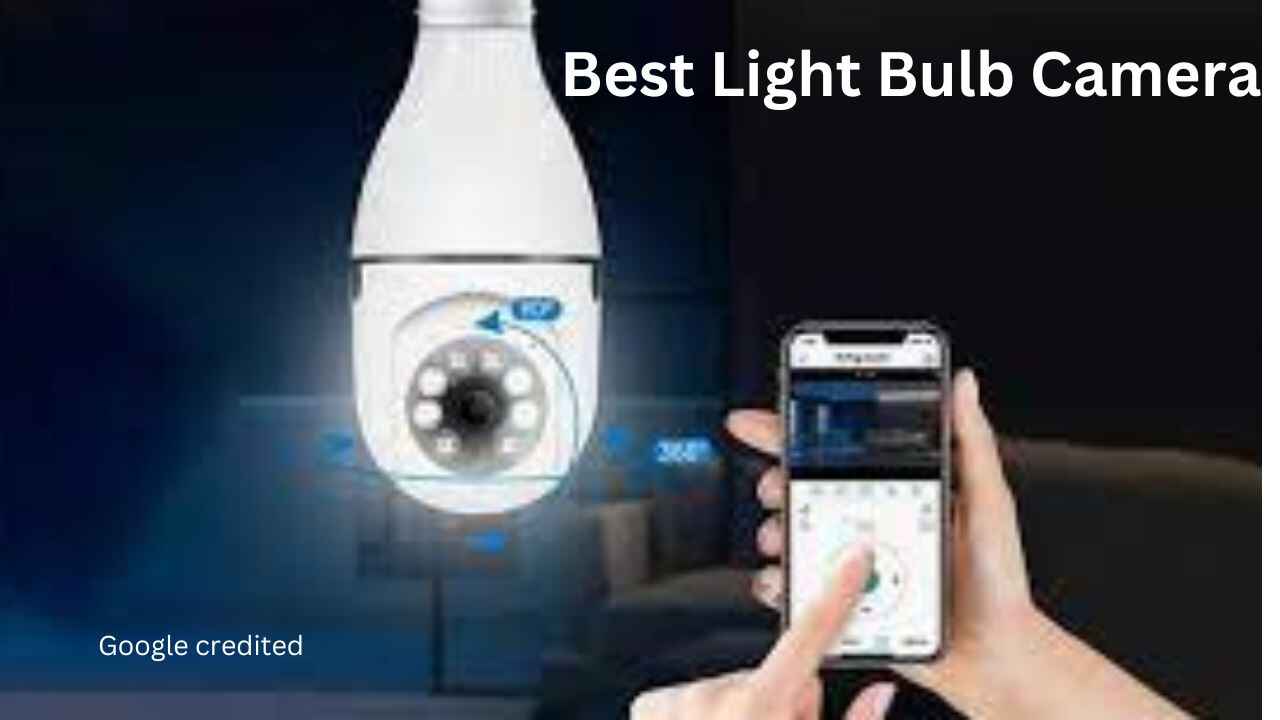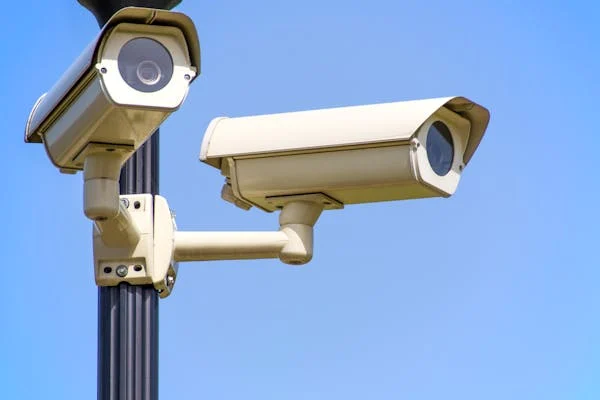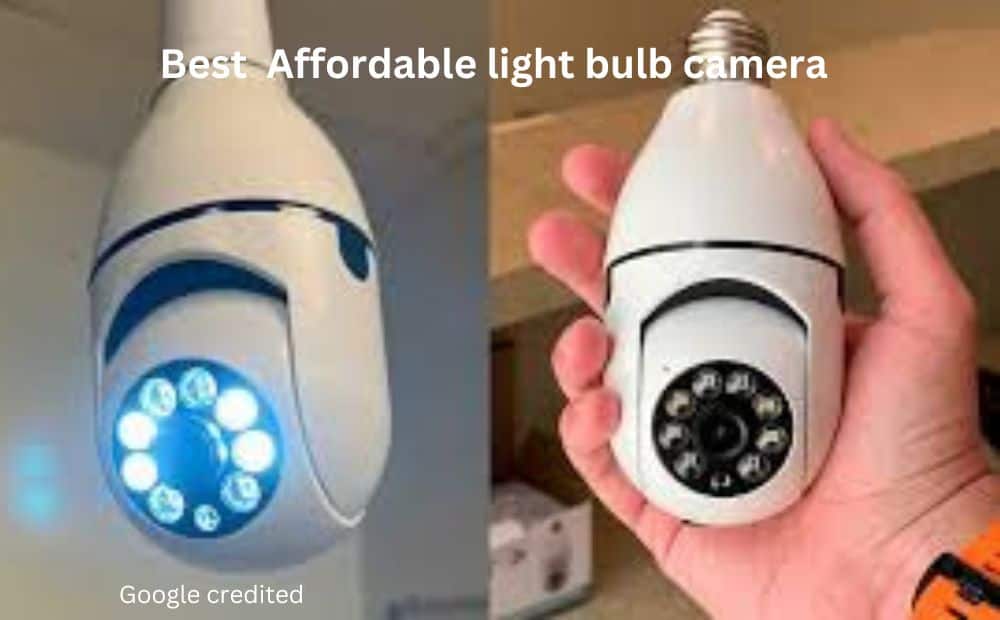How much electricity does a light bulb camera use? In todays digital world, every person prefers home security, light bulb cameras have emerged as innovative solutions, seamlessly blending technology with everyday household items. These are ingenious devices that integrate high-tech elements with common household items. These clever gadgets do two things simultaneously: they monitor activities across your home and emit light. Thus, you can rest easy knowing that an additional set of eyes is keeping a check on your home.
One major question that now arises as we begin to use these smart devices is: How much electricity does a lightbulb camera use? We’ll look into how much electricity these nifty gadgets require in this useful guide.

What Exactly Is a Light Bulb Camera?
Light bulb cameras are innovative devices that blend the simplicity of a regular light bulb with the capabilities of a security camera. These cameras fit into standard light bulb sockets, making installation incredibly easy. Their discreet design also means they don’t stand out, so you can keep an eye on things without drawing attention.
Common Features of Light Bulb Cameras:
- Motion Detection: Notifies you when it senses movement.
- Two-Way Audio: Enables you to communicate with the camera while listening.
- Night Vision: Enables clear video recording even in low light.
- Wi-Fi Connectivity: Lets you monitor your camera feed from your smartphone.
Types of Light Bulb Cameras Available:
- Standard Light Bulb Cameras: These are basic cameras designed for general home monitoring.
- 360-Degree Cameras: These provide a full panoramic view, offering enhanced coverage.
- Hidden Light Bulb Cameras: These are designed to be stealthy, blending seamlessly into your home’s décor.
Understanding Electricity Consumption Basics
To understand how much electricity a light bulb camera uses, you need to grasp some basic concepts.
Wattage and Kilowatt-Hours (kWh)
Electricity consumption is measured in watts(W). The wattage indicates how much power a device uses when it’s turned on. To measure how much electricity is consumed over time, we use kilowatt-hours (kWh). One kilowatt-hour equals using 1,000 watts for one hour.
Factors Affecting Electricity Usage in Electronic Devices
- Device Settings: Higher resolution and more features can increase energy consumption.
- Usage Time: The longer the camera runs, the more electricity it will use.
- Power Mode: Some devices have standby modes or energy-saving settings that lower power usage.

How to Calculate Electricity Consumption
To calculate the power consumption of your light bulb camera:
- Multiply the wattage by the number of hours it’s used each day.
- Divide the result by 1,000 to convert watts to kilowatt-hours (kWh).
- Multiply the kWh by your electricity rate to find the cost.
Average Power Consumption of Light Bulb Cameras
Typical Wattage Range for Light Bulb Cameras
Most light bulb cameras have a wattage range between 5 and 15 watts. This is much lower compared to traditional security cameras that can consume up to 20-40 watts or more.
Comparison with Regular LED Bulbs
A typical LED light bulb uses between 5 and 10 watts, meaning that the power consumption of a light bulb camera is fairly comparable to regular LED bulbs.
Factors Influencing Light Bulb Camera Electricity Usage
Several factors impact how much electricity your light bulb camera consumes:
Video Quality and Resolution
Higher resolutions, such as 1080p or 4K, require more power to process and store the data. If your camera streams video constantly in high resolution, expect slightly higher energy usage.
Night Vision and Motion Detection
Using night vision increases power consumption as the camera needs extra energy to operate infrared sensors. Similarly, motion detection requires constant monitoring of the video feed, which also uses more energy.
Wi-Fi Connectivity and Data Transmission
Wi-Fi-enabled devices typically use more power to maintain a constant connection. If your camera is streaming data to a cloud storage system, it will consume additional power due to the constant transmission of information.
Calculating the Cost of Running a Light Bulb Camera
Step-by-Step Guide to Estimating Monthly Electricity Cost
1. Identify the Wattage: Find the wattage of your light bulb camera (e.g., 10 watts).
2. Estimate Usage Time: Calculate how many hours it’s in use per day (e.g., 24 hours).
3. Calculate kWh: Multiply wattage by hours of use, then divide by 1,000.
– Example: 10 watts × 24 hours = 240 watt-hours/day = 0.24 kWh/day.
4. Multiply by Electricity Rate: Check your local electricity rate (e.g., $0.12 per kWh).
– Example: 0.24 kWh/day × $0.12 = $0.03/day.
– Monthly cost: $0.03/day × 30 = $0.90/month.
Example Calculations for Different Usage Scenarios
- Low Usage (8 hours/day): Costs around $0.30/month.
- High Usage (24 hours/day): Costs around $0.90/month.
Tools and Apps for Tracking Energy Consumption
Several apps, such as Sense and WattVision, help track the power consumption of smart home devices, including light bulb cameras.
Energy-Saving Tips for Light Bulb Camera Users
Optimizing Camera Settings for Lower Power Consumption
Reduce video resolution, disable features you don’t need, and set shorter recording intervals to save energy.
Utilizing Scheduling and Motion Detection Features Effectively
Instead of keeping the camera running all day, use scheduling features to turn it on only when needed. Motion detection can also help by activating the camera only when something is moving.
Choosing Energy-Efficient Models and Brands
Look for energy-efficient brands or models with a lower wattage rating. Check for energy-saving modes or cameras that operate on lower power when idle.
Environmental Impact of Light Bulb Cameras
Carbon Footprint Considerations
Light bulb cameras generally have a smaller carbon footprint than traditional security systems. However, continuous usage and cloud storage can contribute to energy consumption.
Comparison with Traditional Security Cameras
Light bulb cameras typically use less electricity than wired security cameras, which often have additional components like external power supplies, making them more eco-friendly.
Eco-Friendly Alternatives and Innovations in the Market
Consider solar-powered light bulb cameras or models with rechargeable batteries to further reduce your environmental impact.
Conclusion: How Much Electricity Does a Light Bulb Camera Use?
Well, there you have it, folks! We’ve illuminated the truth about light bulb camera electricity consumption, and it’s not as scary as you might have thought. While these clever little devices do use some power, their impact on your electricity bill is generally minimal compared to other household appliances. By following our energy-saving tips, you can keep your home secure without breaking the bank or the planet. So go ahead, embrace the future of smart home security – just remember to turn off the lights when you leave the room! (Old habits die hard, right?)
Related articles:
- How many watts does a light bulb use
- Best smart bulb security camera
- Keilini-light-bulb-security-camera
So why are you waiting hurry up
Hi, I’m Malik Suhail—an SEO expert, web designer, and passionate blogger with 2 years of experience. I specialize in crafting content that is not only informative but also tailored to meet the needs of my readers.
I write about diverse topics, always striving to simplify complex ideas and provide valuable insights that resonate with my audience. Whether it’s about SEO strategies, web design trends, or blogging tips, I am committed to delivering well-researched, practical, and easy-to-understand information.
My mission is to help readers navigate the digital world with confidence and clarity. I believe in adding value through authentic content that inspires action and delivers results.


